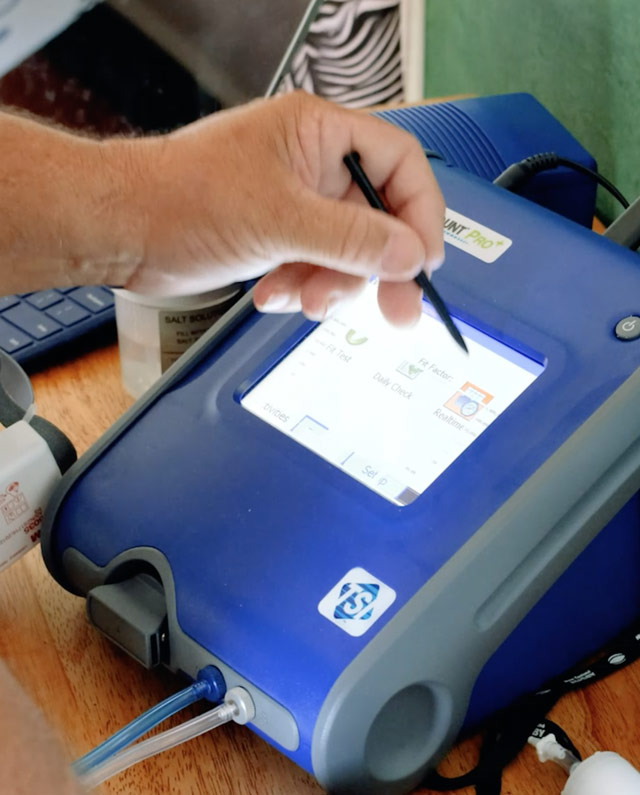Why is fit testing required?
Fit testing is done to ensure that the respirator mask you are wearing is correctly fitted to your face. Because you are unique and every face is different, the mask your supplier has provided might not necessarily fit you correctly. Without a correct fit, your health could be at risk.
Who should have a fit test performed?
We recommend that anyone who is mandated under the Health and Safety Act by their employer to wear a mask should have a fit test performed. We can also fit-test anyone else who would simply like to ensure their mask is correctly fitted.
What type of mask offers the best protection?
Cloth or surgical masks (the commonly seen blue/white disposable type), while moderately effective at capturing particles coming from your own mouth, offer little protection against incoming particles.
To properly protect yourself against COVID-19 and other contaminants that are dangerous to your health, you need to wear a filtering facepiece respirator – sometimes called a high-filtration mask – such as a P2 or N95 respirator. These masks are made from three layers of meltblown polypropylene and contain an electrostatic charge that traps particles being breathed in or out.
How is the correct fit of a respirator measured?
Fityaface uses advanced technology to perform a quantitative fit test (QNFT). This provides a ‘fit factor’ number. A fit factor of at least 100 is required for half-mask respirators and a minimum fit factor of 500 or 1000 for a full facepiece negative-pressure respirator, depending on the protection factor required in use.
What factors might prevent a mask from being a good fit?
A common reason is that the mask is simply the wrong size for your facial shape. But even if you have the right size, it’s important that the user knows how to put on and correctly seal the mask, and the right way to remove it. Facial hair is another factor that can affect how well your mask fits.
What are the signs of a poorly fitting mask?
A well-fitting mask should seal to the skin around all edges. If there are any gaps whatsoever then the mask is not properly fitted.
What is the difference between fit ‘testing’ and fit ‘checking’?
A fit test is performed using a testing machine to provide a fit factor number and ensure the mask is correctly fitting. Once this is done, a fit ‘check’ should be performed each time the mask is put on.
Fit checking involves the user checking a pre-fitted respirator at the time of wearing to ensure it is properly applied and has a good seal around all edges.
How long does a fit test take?
The fit test is very quick and easy. The actual test takes less than 6 minutes but allow around 15 minutes for each user to be set up, tested, and to be instructed on how to correctly fit check their mask each day.
How often should tests be performed?
We recommend testing at least annually.
When should I organise a fit test for my employees?
As soon as possible! As an employer, you are legally obliged to ensure the masks your staff wear are fit for purpose. The ministry of health has also strongly recommended that all masks are fit tested to make sure they are as effective as possible to help prevent the spread of the Omicron variant of Covid 19.


